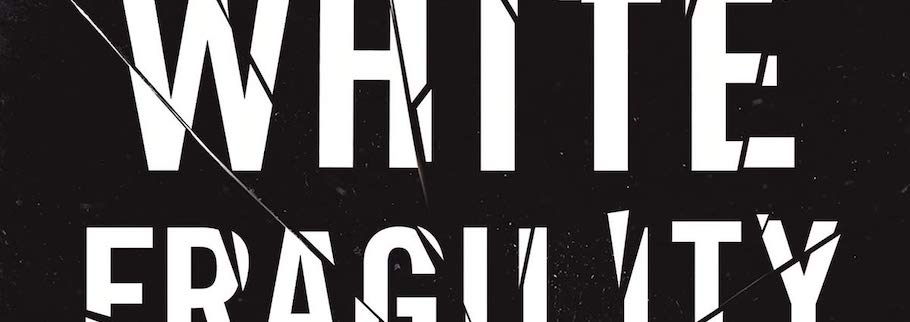It seems like the whole world is talking about race and racism and racial reconciliation. Here in 2020 the conversation has come to the fore with renewed force and renewed urgency. Perhaps no author has played a more central role in this cultural conversation than Robin DiAngelo and perhaps no book has been more widely recommended than her White Fragility: Why It’s So Hard for White People to Talk About Racism. Though it was first published in 2018, its moment has come two years later and, according to the foreword, has established DiAngelo as “the new racial sheriff in town”—one who “is bringing a different law and order to bear upon the racial proceedings.”
The great tension at the heart of the book is this: Why is a white woman leading the conversation about racism and racial inequality? If white people are so biased and so blinded by our whiteness (as she herself teaches), how can we trust her to properly understand the problem and prescribe the right solution? DiAngelo begins to offer her resolution to this conundrum by introducing the reader to a key term—identity politics. She states on the opening page that her book is unapologetically built upon identity politics, which she defines as “the focus on the barriers specific groups face in their struggle for equality.” That is undoubtedly a reductionistic definition, but it at least gets at the heart of it, which is to divide people into groups based upon certain identity markers (e.g. gender, race, sexual orientation, etc); then to determine which of those groups have power and which are marginalized; then to identify the barriers to equality the marginalized groups face; and then to have the people with power advocate on behalf of those who do not.
This raises the question: Who in America and in broader Western society has power and who is marginalized? She gets right to it in the first sentence of the introduction: “White people in North America live in a society that is deeply separate and unequal by race, and white people are the beneficiaries of that separation and inequality.” If that’s the case, and if we are to follow the principles of identity politics, then people of color are so seriously marginalized that they cannot effectively advocate for themselves. The systems of racism are so deeply embedded in North America, and people of color have been made so powerless, that white folk must take the lead in advocating for equality—white folk like Robin DiAngelo. In this way she understands herself as acting altruistically. Because she is white, she is in the group that has power and she now uses this privilege to advocate on behalf of the group that is powerless. She does this by targeting her book to what she refers to as “the white collective.” She speaks to others within her identity group and calls them to first talk about racism and then to go beyond talk and take action on behalf of the marginalized.
I have had quite a number of people ask my opinion about this book and request that I review it. To that end, I am going to provide a kind of summary of its contents and then, in a second article, discuss whether it is a helpful resource for Christians. I primarily want to consider the “story” DiAngelo is telling. I am convinced that all human beings believe and then attempt to live out a story about the world. This story explains what the world should be like, tells what the world is actually like, prescribes actions we ought to take to improve the world, and describes the future we can imagine when we’ve done so. I am going to summarize her book according to this kind of narrative structure.
What Should The World Be Like?
The world should be marked by peace, equity, and equality between all people—all races, creeds, sexual preferences, gender identities, and so on. Western nations should have been founded in such a way that they guaranteed these rights and freedoms for all. Had they been founded upon better principles agreed upon by a more diverse cast of characters, all people could have thrived equally.
What Is the World Actually Like?
However, that was not to be and the nations were instead founded exclusively by white men and, therefore, upon principles of white supremacy. White supremacy is “the all-encompassing centrality and assumed superiority of people defined and perceived as white and the practices based on this assumption.” This system, which is the bedrock of Western nations, ensures that white people are always treated as full persons while non-whites are treated as sub-persons. Because of this built-in white supremacy, Western nations were founded with deeply-embedded ideologies that would serve to perpetuate whiteness. The two most insidious and deterministic of these ideologies are individualism and objectivity. “Briefly, individualism holds that we are each unique and stand apart from others, even those within our social groups. Objectivity tells us that it is possible to be free of all bias.” Thus, individualism convinces us that our primary identity is as autonomous individuals rather than as collectives. Meanwhile, objectivity convinces us that the only barriers to success are those that are common to all people, which means failure must be the fault of our own character rather than the fault of unjust societal structures. While we’ve been told that Western nations allow opportunity for all people to succeed, the reality is that these nations are intrinsically biased toward whites.
Today, this system of supremacy is maintained intentionally and unintentionally by whites and then imposed upon people of color through conditioning and violence. It is perpetuated by governmental institutions, economic systems, and mass media. “White supremacy describes the culture we live in, a culture that positions white people and all that is associated with them (whiteness) as ideal.” Whites depend upon white solidarity—an unspoken agreement among ourselves to maintain and protect advantages—to ensure the system remains in place. Not only that, but whites actually define ourselves in opposition to people of color, so that “anti-blackness is foundational to our very identities as white people.” Anti-blackness and pro-whiteness have become embedded in our consciousness in such a way that they are very nearly an original sin that is passed from parents to their children.
Thus, the problem with Western society is that it was built to perpetuate whiteness—to ensure the dominance of whites at the expense of all others. This means that people of color cannot succeed within it unless it is radically overhauled by the group that has access to the structures of power—whites. Some will object here by pointing to people of color who have risen to great heights of power and prominence, but DiAngelo is quick to explain that such people succeeded only because they did not challenge the status quo: “Although rare individual people of color may be inside the circles of power—Colin Powell, Clarence Thomas, Marco Rubio, Barack Obama—they support the status quo and do not challenge racism in any way significant enough to be threatening.” In this way what we may have seen as progress in race relations is actually either the maintenance of the status quo or possibly even regress. In fact, racism may be more pronounced and more pernicious now than it was even in the days of Jim Crow. “In some ways, racism’s adaptations over time are more sinister than concrete rules such as Jim Crow. The adaptations produce the same outcome (people of color are blocked from moving forward) but have been put in place by a dominant white society that won’t or can’t admit to its beliefs.”
What Actions Should We Take To Make a Better World?
The solution follows from identifying the core problem of white supremacy. DiAngelo says, “Naming white supremacy changes the conversation in two key ways: It makes the system visible and shifts the locus of change onto white people, where it belongs. It also points us in the direction of the lifelong work that is uniquely ours, challenging our complicity with and investment in racism.” The solution, then, is for white people to change ourselves and then change the system.
The first step in changing the system is for whites to own our racism. DiAngelo makes it clear that to be white is to be racist. This doesn’t necessarily mean that every white person makes overtly racist declarations or that we explicitly state that we are superior to others. But white people are still guilty of racism because though “we are taught to think about racism only as discrete acts committed by individual people,” racism is actually “a complex, interconnected system.” Racism is a system into which we are all socialized in such a way that “racism is unavoidable and … it is impossible to completely escape having developed problematic racial assumptions and behaviors.” In that way all white people think and act in racist ways. In fact, any conviction that we are free from racism is itself proof that we are racist. Further, only whites can actually be racist, for only we can express our prejudice through social and institutional power. And since we can, we do.
So the first step in working toward a solution is owning our racism, but that is difficult to do because we have been conditioned to be fragile. (Remember the subtitle of the book: “Why It’s So Hard for White People to Talk About Racism.”) White fragility is the inability of white people to admit our racism. It is the stress or even anger we feel when other people—either people of color or enlightened experts like DiAngelo—“connect us to the system of racism.” It is our reaction to being told that we are racist, that we enjoy the benefits of our racism, and that we constantly take actions to protect our power and privilege over people of color. “We consider a challenge to our racial worldviews as a challenge to our very identities as good, moral people,” and therefore object with words or emotions, both of which are themselves proof of our racism. “These responses work to reinstate white equilibrium as they repel the challenge, return our racial comfort, and maintain our dominance within the racial hierarchy.” It is important to note that this “fragility” is actually a means of control and of maintaining the status quo, “a powerful means of white racial control and the protection of white advantage.” This “weakness” is actually a brutal kind of strength we use to harm people of color by keeping them in subjection to the system of white supremacy.
Those whites who admit our racism and overcome our fragility are now in a position where we can have our “racial consciousness” raised. This involves two ongoing efforts: instruction and feedback. We need to submit to the instruction of experts by reading books like DiAngelo’s and by attending seminars like the ones she teaches on identity politics, white fragility, and implicit bias. Then we also need to get feedback from people who can point out where we have expressed our racism in implicit and explicit ways. The white person whose racial consciousness has been raised can function in this role by pointing out our racist actions, uncovering our motives, and helping us understand how to make atonement or restitution. People of color can also help if they are willing to instruct us, but we need to be careful since the expectation that people of color should teach us about racism is itself racist. To that end, we can generally assume we are acting in racist ways around people of color since we almost always act to further the power of our identity group. We must also accept any charges made against us since much of our racism manifests itself in ways we cannot perceive, for what matters is not the intent of our words and actions, but the effect they have on others. To challenge such charges is to express both fragility and supremacy.
What all whites need, then, is to commit to “engaging in ongoing self-awareness, continuing education, relationship building, and actual antiracist practice.” This is a lifelong commitment to awareness, learning, listening, and acting.
What Could This World Be Like?
If every white person in Western society were to purchase DiAngelo’s book, read it studiously, and begin to engage in “ongoing self-awareness, continuing education, relationship building, and actual antiracist practice” what kind of world would we have?
Through a growing racial consciousness, white people would eventually and gradually experience a kind of awakening where we would begin to see race as the defining attribute of all people and our whiteness as the foundational source of disunity in Western society. We would begin to take action, some of which would be wrong-headed and some of which would be virtuous.
Having seen the intrinsic evils of whiteness, whites would want to attempt to construct a positive white identity, but we would soon realize this is impossible, for “white identity is inherently racist; white people do not exist outside the system of white supremacy.” White people would also try to commit to doing their best to treat people of color more equitably, but that too would prove impossible for “it is not possible to teach someone to treat everyone the same.” We might try to raise the next generation to be better than we are, but that would also lead to failure, for the systems we are raised in are determinative to the degree that “a racism-free upbringing is not possible, because racism is a social system embedded in the culture and its institutions.”
So what could and should we do? Those determined to virtuously act out their new racial consciousness would need regular and ongoing antiracism training through books and seminars, and through it would follow DiAngelo in striving to be “less white.” To be less white is to be less racially oppressive, “to be open to, interested in, and compassionate toward the racial realities of people of color,” “to break with white silence and white solidarity, to stop privileging the comfort of white people over the pain of racism for people of color, to move past guilt and into action.” It also involves attempting to form relationships across the races, but this is exceptionally difficult because “relationships with white people tend to be less authentic for people of color” since they must constantly tolerate the racist actions and attitudes of their “friends.”
As we put off our whiteness, we would join DiAngelo on a continuum where we would slowly divest ourselves of our intrinsic racism, though always being realistic that we could never fully attain what we desire, for “racism is so deeply woven into the fabric of our society” and our very selves that we can never actually escape the continuum altogether but only “seek to move further along it.”
Conclusion
I believe this briefly but accurately summarizes White Fragility as a kind of narrative. It is her account of what the world should have been, what it is actually like, what we ought to do about it, and what hope we can have for the future. As this review continues into another article I want to interact with some of her claims, see if and how the story she tells can be reconciled with the story the Bible provides us, and discuss whether her book can be a helpful resource for white Christians as we talk about racism and then take action. (Part Two: White Fragility and the Bible’s Big Story)










